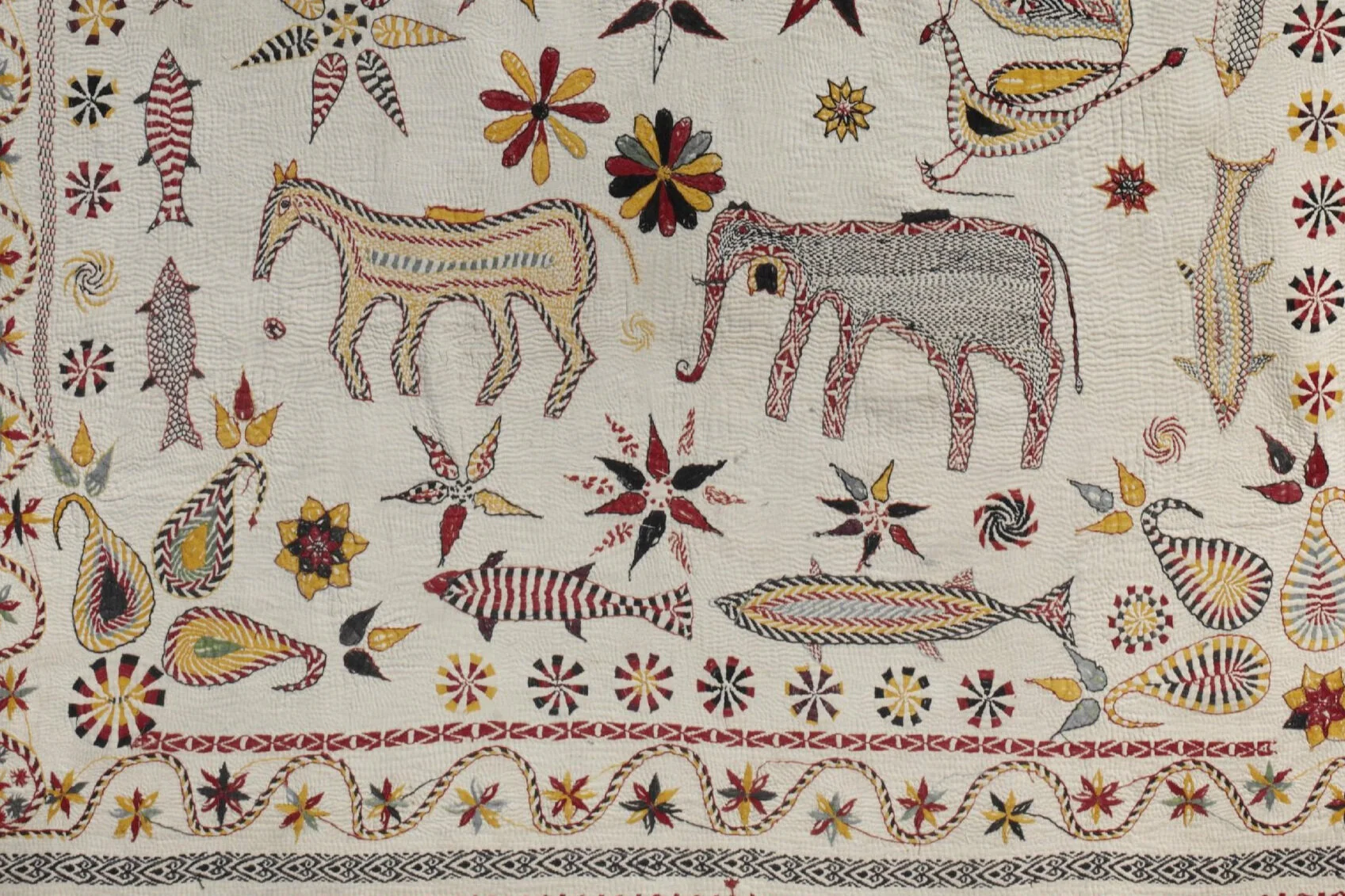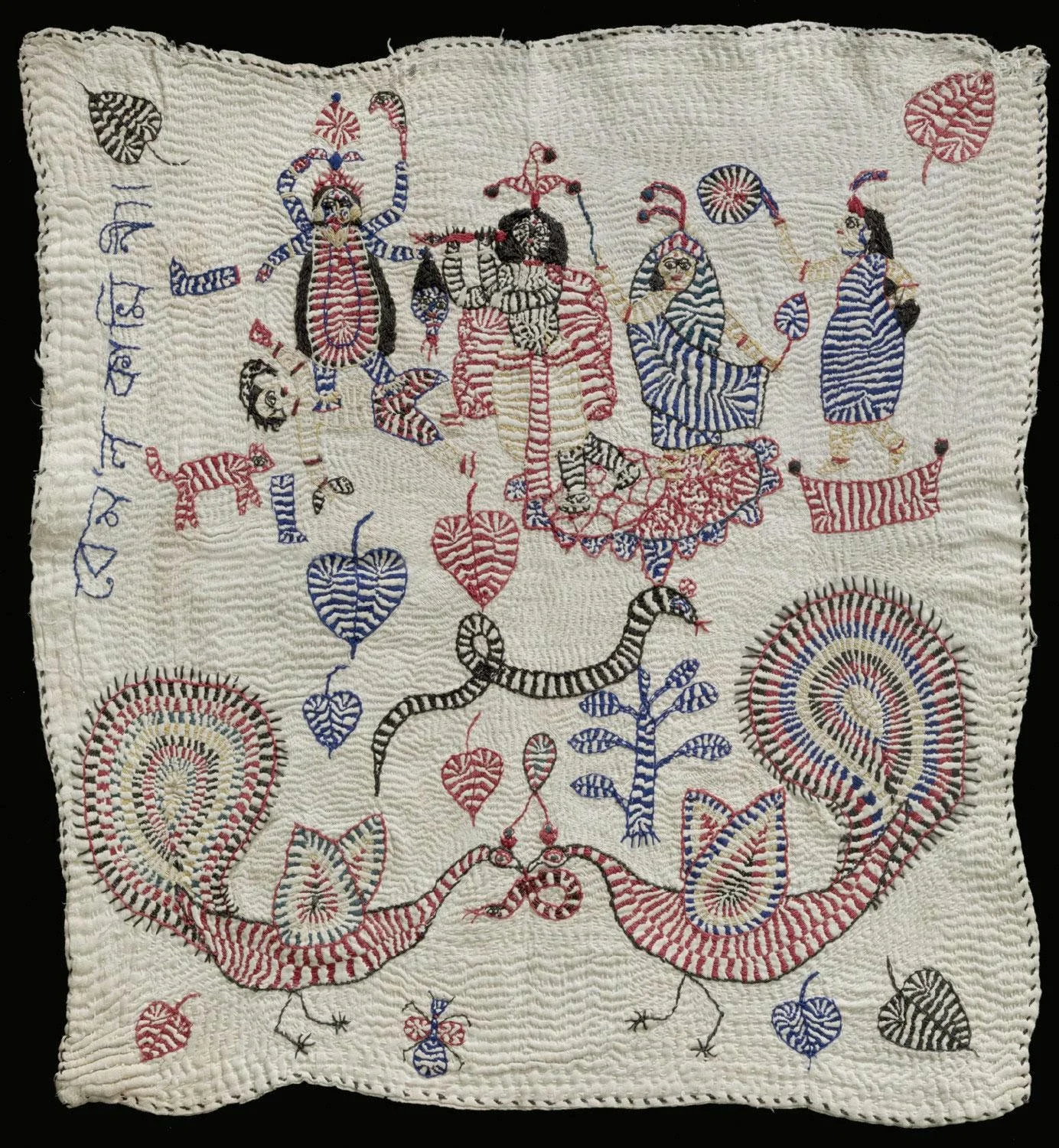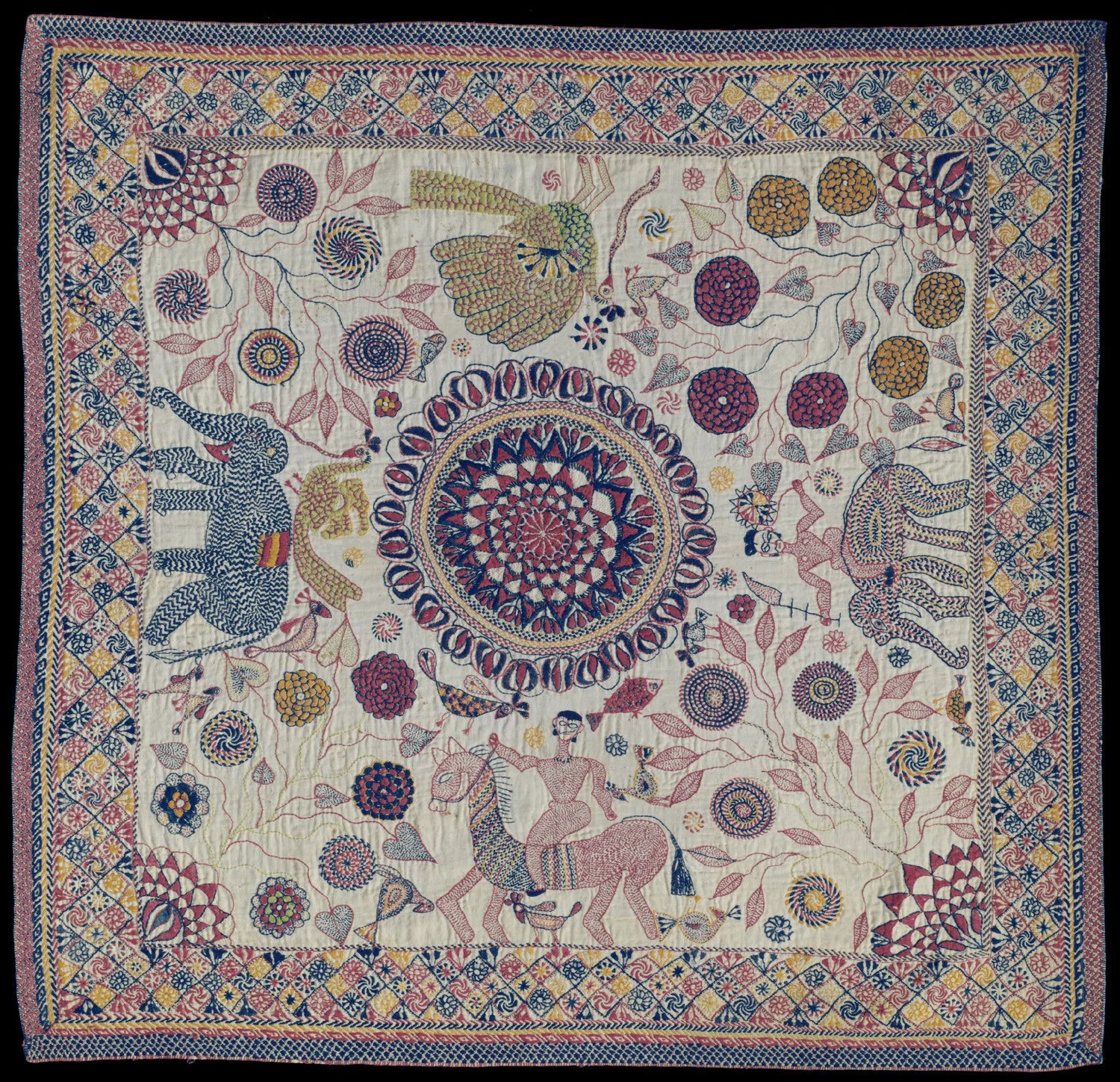What is kantha?
The terms upcycling, deadstock fabric, zero-waste design have only recently become part of the fashion vocabulary. However the practice of creating both art and functional textiles from tatters is an age-old, significantly women-led tradition. Kanthas are an example of those domestic thrifty traditions, as well as an icon of cultural identity and artistic expression.
Detail of a kantha from the first half of the 20th century, undivided Bengal. Cotton plain weave with cotton embroidery in back, darning, outline, satin, running, eye, seed, surface satin, dot, and zig zag variation stitches.
Source: Philadelphia Museum of Art
Kantha is a generic term indicating a broad range of quilted household textiles from Bengal. At the most fundamental level, Kanthas’ consist of multiple layers of discarded cloth sewn together using a parallel running stitch (or kantha stitch), with no decorative embroidery.
The most elaborate kanthas display colourful motifs that are embroidered over the quilted base fabric using a variety of stitching techniques and conveying a series of narratives and symbolisms.
Kantha from the late 19th or early 20th century, undivided Bengal. Cotton plain weave with cotton embroidery in back, darning, satin, running, and seed stitches.
“In the lower half of this kantha two peacocks battle over a snake, their wings raised, a distinctive regional motif. The four figures in the upper half of the quilt are unrelated to this scene: the fierce goddess Kali, brandishing her ritual chopper and a severed head while standing on a corpse; the god Krishna, playing his flute, and his lover, Radha, together on a lotus; and a fan-bearing attendant. These figures probably narrate the Bengali tale of how, to avoid detection, Krishna miraculously transformed into Kali when Radha’s mother nearly caught them together. While the transformation is shown here, it is incomplete: Krishna’s peacock-feather crown has yet to turn into Kali’s banana-pith headdress.”
Source: Philadelphia Museum of Art
Traditionally the base cloth for kanthas was white cotton and the fabric layers were secured with white thread, without using frames or hoops to keep the fabric taut. As a result the fabric surface is gently puckered and the running stitches give it a delicate yet irregular texture.
The origin of kantha is unknown, however some early embroidery works made in Bengal in the 16th and 17th for the Portuguese market (Satgaon embroideries) use the running stitch, blue and red thread, and motifs similar to the kanthas. This implies that kantha as a domestic practice could be older than 500 years.
Map of Bengal
Credit: Anandaroop Roy for the Philadelphia Museum of Art
Kanthas come in a variety of shapes and sizes. According to their dimensions, kanthas filled an array of functions, from the large rectangular pieces used as blankets and floor cloths for guests, to the smaller pieces used for babies or as prayer mats. Tiny elongated kanthas pieces were created to enfold personal items such as mirrors, combs or books.
Kantha from the second half of the 19th century, undivided Bengal. Cotton plain weave with cotton embroidery in back, buttonhole, darning, outline, satin, split, running, seed, fern, knot and zig zag variation stitches.
Source: Philadelphia Museum of Art
Each kantha is an expression of an individual woman’s world view. The embroidered patterns tell unique narratives and include religious symbols, folk tales and scenes inspired by everyday life. Kanthas are also associated with family and protection, for their base cloth is made of discarded saaris and household cloths that have been used by close family members. The most elaborate kanthas are considered prized heirlooms and passed on from one generation to the next.




